Hard cheese | Mountain cheese
Semi-hard cheese

Original price was: € 192,46.€ 173,91Current price is: € 173,91. (incl. VAT)
The Unique Cream Cheese Specialty
The cream cheese wheel for every day. For many cheese lovers, the favorite cheese for all occasions.
Base price: € 23.80/kg
… makes children happy – and adults too.
The delicious cream cheese wheel made from high-quality hay milk not only delights children’s hearts but also appeals to the palates of adults. Its soft, melting consistency and its fine, smooth texture with cherry-sized holes make it a treat for all age groups.
Particularly noteworthy is the quality of this cheese wheel, made from hay milk. Hay milk comes from cows traditionally fed with fresh grass and hay, giving the cheese a uniquely mild and natural flavor.
This feeding method not only contributes to the exceptional quality of the cheese but also promotes sustainable and eco-friendly production.
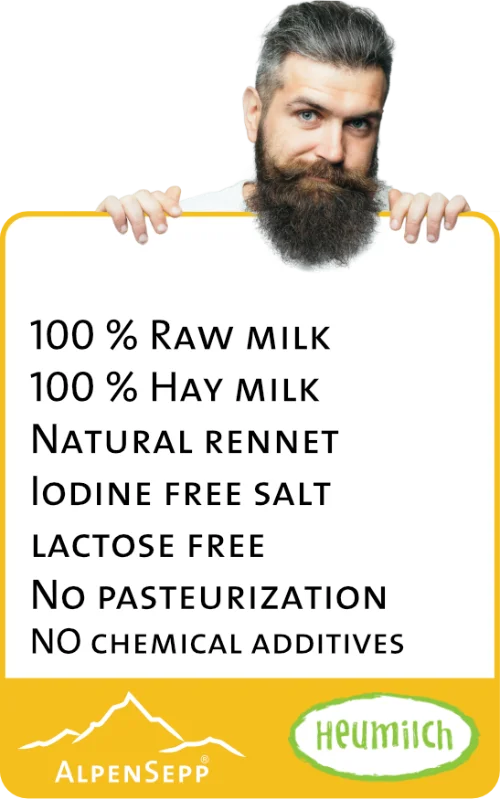
Lactose-free aged cheese: The natural milk sugar in our hay milk cheese is broken down by lactic acid bacteria. Result: lactic acid plus flavor and aroma development.
Another advantage of this cream cheese wheel is that it is lactose-free. This means that even people suffering from lactose intolerance can enjoy the mild flavor and creamy consistency of this cheese without worry.
Using hay milk and careful processing produces a product that is not only valued in the region but is also becoming increasingly popular with guests seeking the authentic taste of the Alpine region.
This cream cheese combines traditional enjoyment with modern quality, offering a taste experience that delights both young and old. A cheese that not only brings joy but also represents a piece of authentic craftsmanship.
- The cream cheese impresses with a fine, buttery note on the palate. The cheese dough is characterized by its particularly creamy and smooth consistency.
- It is slightly melting and flowing in texture – with a subtle buttermilk touch.

Our cream cheese belongs to the family of our mild cheese varieties in our shop overview.
Cream Cheese has been produced for many years in the Bregenz Forest and has become a favorite cheese for many cheese enthusiasts.
The melting, soft, aromatic texture has gained a large following.
The characteristic properties of cream cheese are significantly influenced by the high-quality Alpine milk, its ingredients and flavor, or consistency, and by the flora of the Vorarlberg Alps.
This results in the exceptional quality of Alpine cheese.
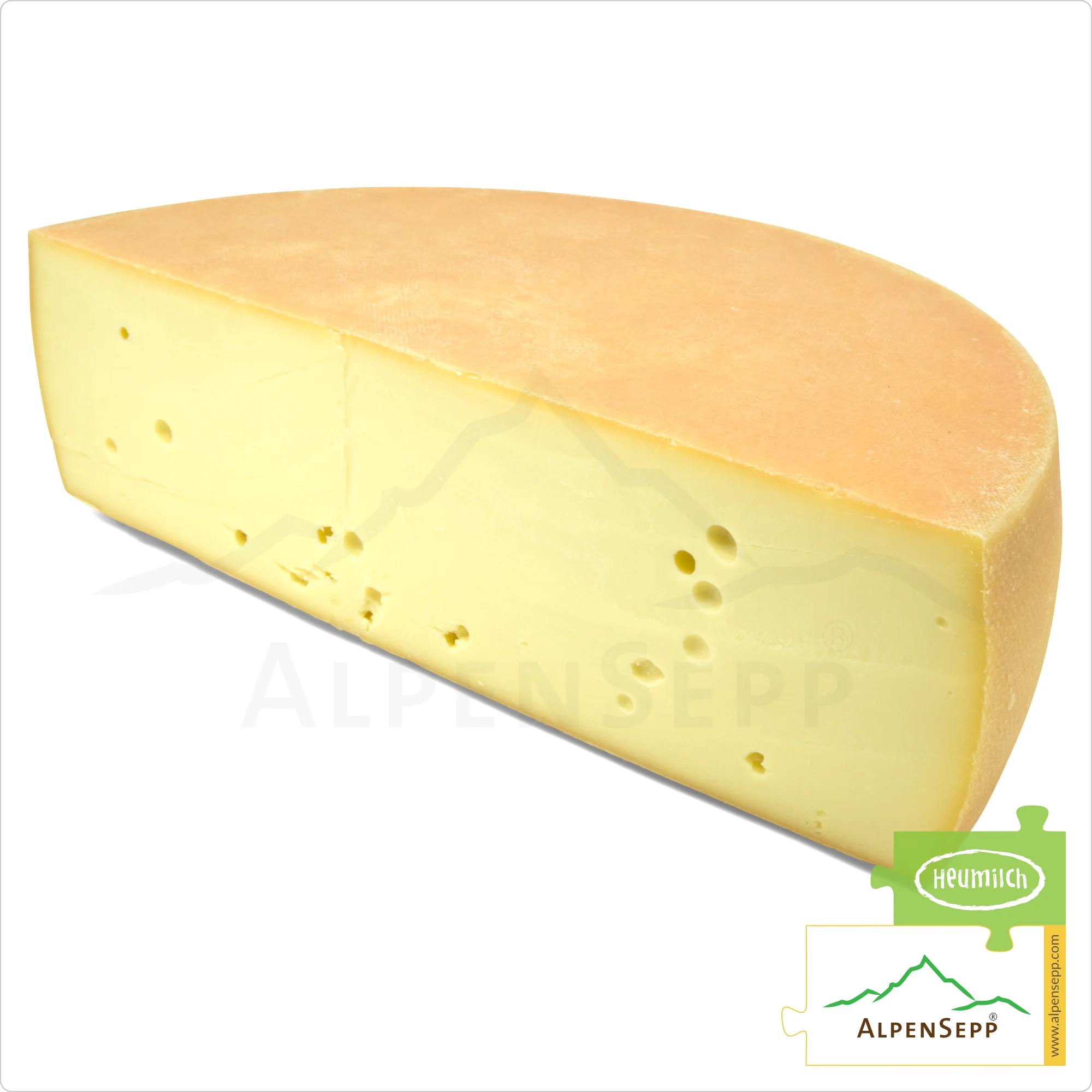
Cheese has been produced and aged in Vorarlberg’s Alpine and valley dairies since the early 20th century.
The production method of “fat cheese” (in contrast to low-fat cheese (Sura Käs in Montafon)) originally came from Switzerland and quickly spread in the Bregenz Forest.
The semi-hard cheeses are made from natural (unpasteurized, non-thermized, or non-centrifuged raw milk (hay milk) with at least 45% fat in dry matter.
Due to the small-scale farming operations that supply the raw materials and the traditional Alpine dairy practices, artisanal production and traditional care of high-quality cheese have been preserved to this day.
More interesting details about semi-hard cheese can be found at Wikipedia.
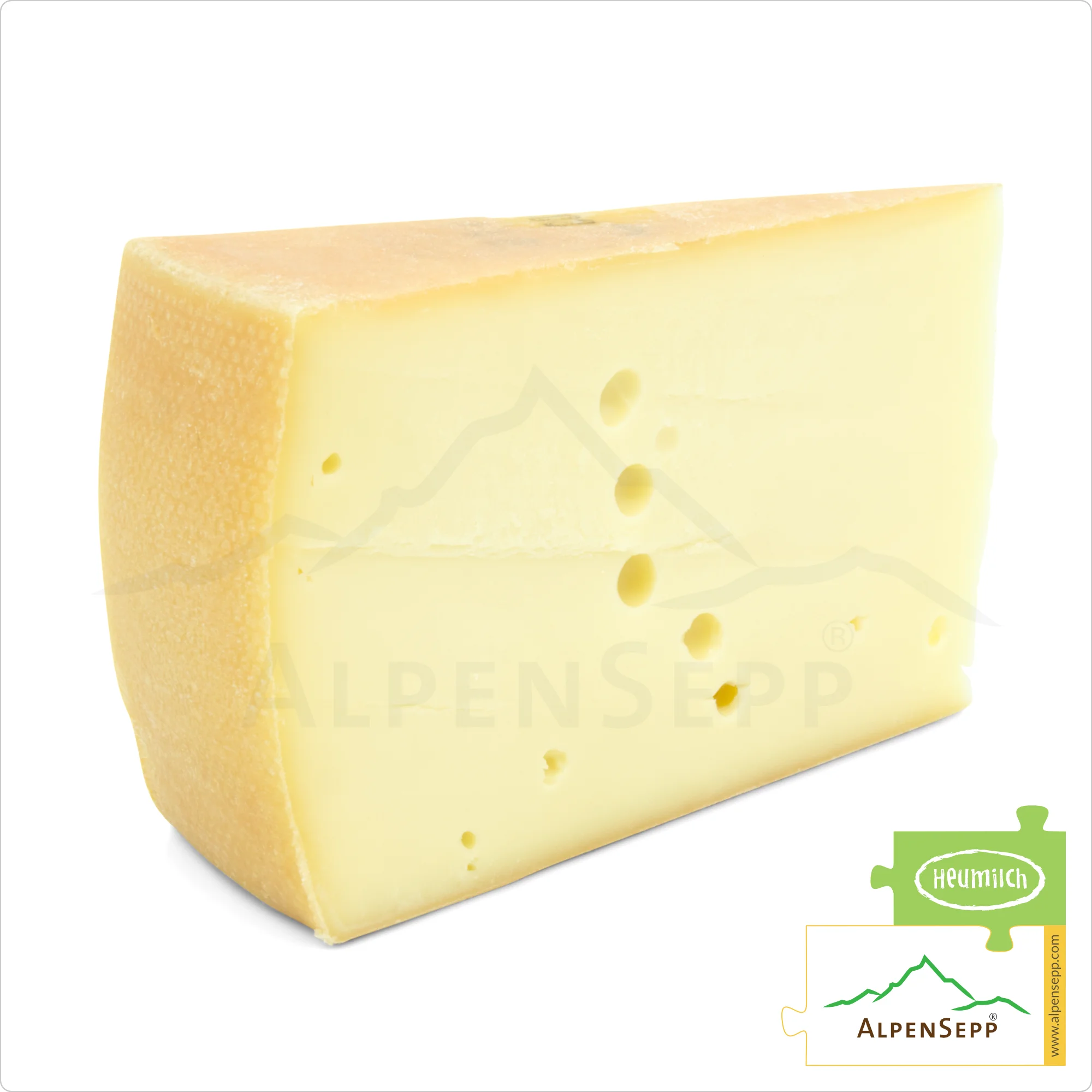
Cream cheese has scattered, cherry-sized holes.
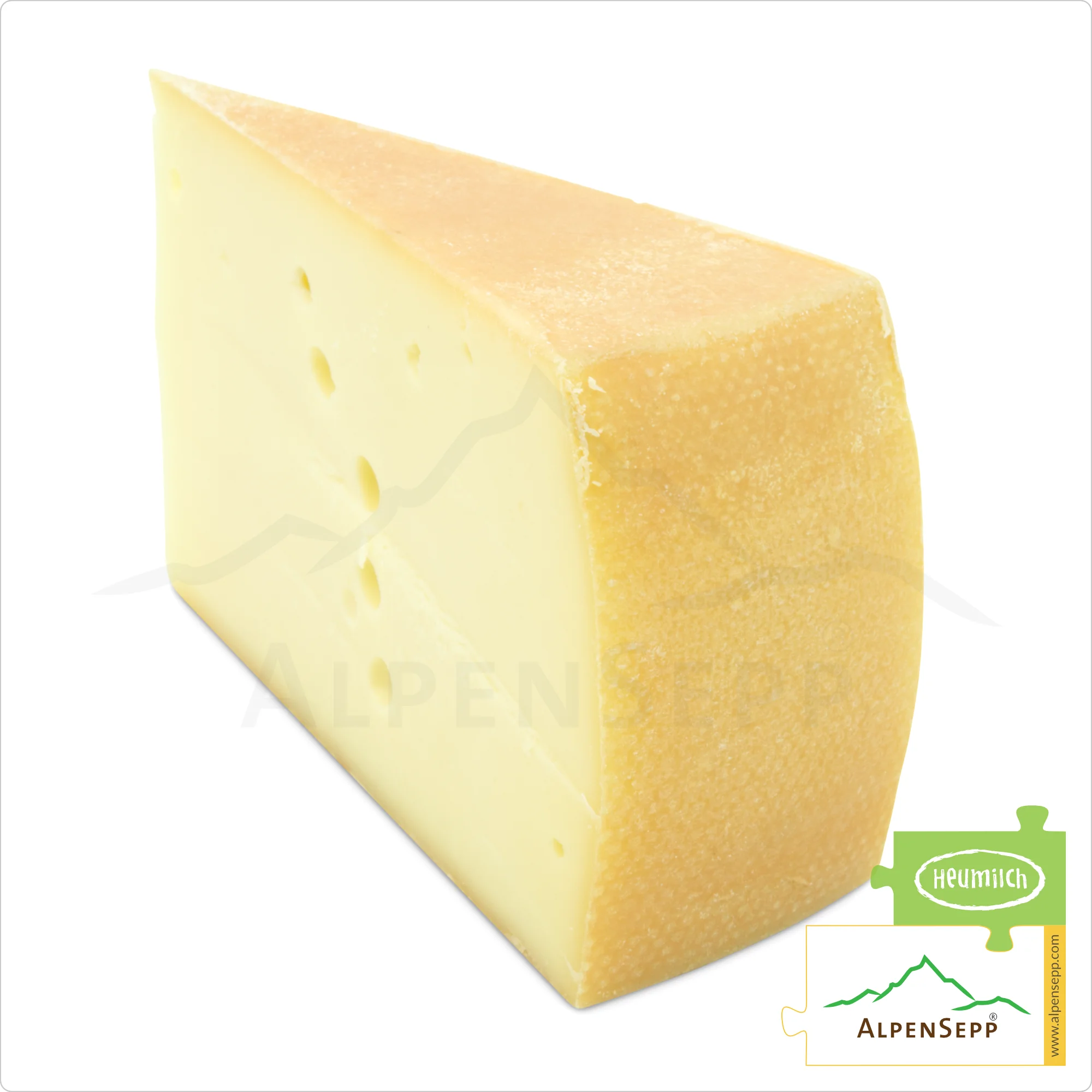
The cream cheese has a yellowish rind.
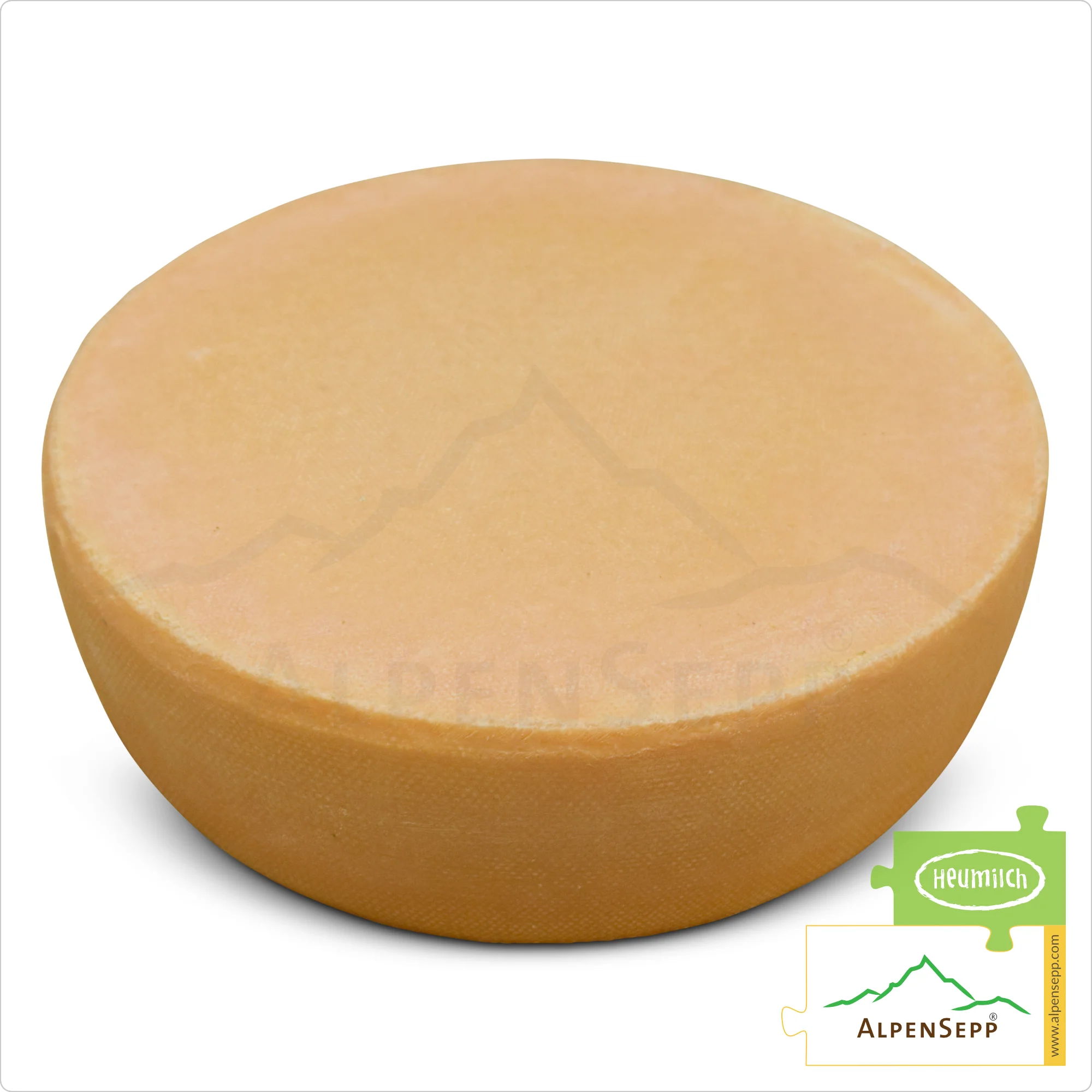
The cream cheese is aged for approx. 3 months in the cheese cellar before it is ready to be enjoyed.
The unique feature of cream cheese is its melting behavior and its mild, creamy cheese flavor.
Cream Cheese Intensity
How mild or spicy is the cheese? We rate it on a scale of 0 (mild) to 10 (spicy).
Cream Cheese Consistency
How firm is the cheese? We rate it on a scale of 0 (soft) to 10 (firm).
Cream Cheese Maturation Time
How long has the cheese matured? We rate it between 1 and 12 months.
| Milk: | 100% from silage-free hay milk |
| Cheese Type: | Lactose-free semi-hard cheese (SHC) |
| Maturation: | Lactic acid and/or fermentation ripening / surface ripening in the cheese cellar with salt care |
| Flavor Profile: | Mild, smooth, gently melting |
| Maturation Period: | 3 months |
| Fat in Dry Matter (F.i.T.): | At least 50% |
| Absolute Fat: | Approx. 30% |
| Allergens: | No allergenic potential beyond milk components |
| Lactose: | Not contained |
| Rennet: | Natural, animal rennet |
| Salt: | Non-iodized table salt |
| What defines the cheese – The cream cheese character? | Especially soft cheese with a gently melting cheese dough |
| How does cream cheese taste? | Full-bodied, gently melting cream aroma |
| How does it feel in texture? | Particularly soft cheese with gently melting cheese dough |
| What is the color of cream cheese? | Whitish to yellowish dough, very season-dependent |
| How does the cheese dough smell? | Slightly sweet cream scent, combined with a fine cheese aroma |
| What is the hole pattern like? | Scattered, cherry-sized holes |
| What is the best way to enjoy cream cheese? | On a snack or sandwich, for breakfast, or simply sliced for supper. |
| What indicates non-optimal ripening – lower quality? | The cheese should be soft but not mushy. |
If you want to store large pieces or a whole cheese wheel for more than 2-3 weeks, we recommend using a tea towel.
To do this, take a clean tea towel, soak it in saltwater (just add a little salt), wring it out, and wrap the cheese in the damp cloth. This process should ideally be repeated every 2-3 days.
If the cheese turns slightly white or develops spots, it is usually salt or protein crystallizing due to temperature differences. These areas can simply be wiped off.
Using aluminum foil is possible (though we advise against it) if complemented with many small holes to allow air circulation.
Please never store or cut cheese on boards, wood, or surfaces previously used for bread. The yeast residues from the bread can cause the cheese to mold quickly.
| Weight | 8,1 kg |
|---|---|
| Brand | AlpenSepp® |
| Country of origin | Austria |
| Cheese maturing time | 3 months |
| Ingredients | Cow's milk, cheese-making, natural lab, iodine-free table salt |
| Kind of cheese | |
| Taste Intensity | mild |
| Name of cheese | Cream cheese |
| Type of cheese | Traditionally hand-made Austrian semi-hard cheese from silage-free raw milk (hay milk) |
| GTIN | 9120022282268 |
| Weight |

When you visit any web site, it may store or retrieve information on your browser, mostly in the form of cookies. Control your personal Cookie Services here.
Henryk (verified owner) –
The cheese was very tasty, I already ordered a new wheel.